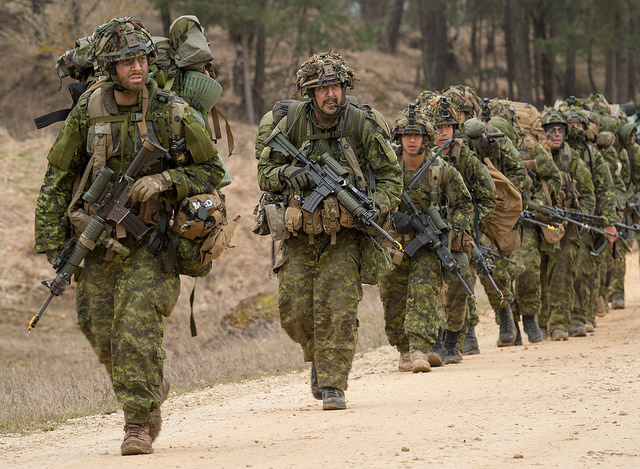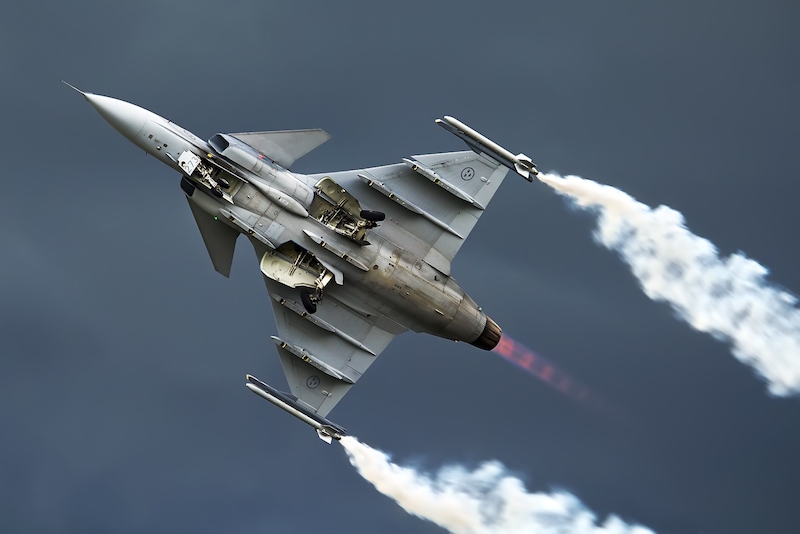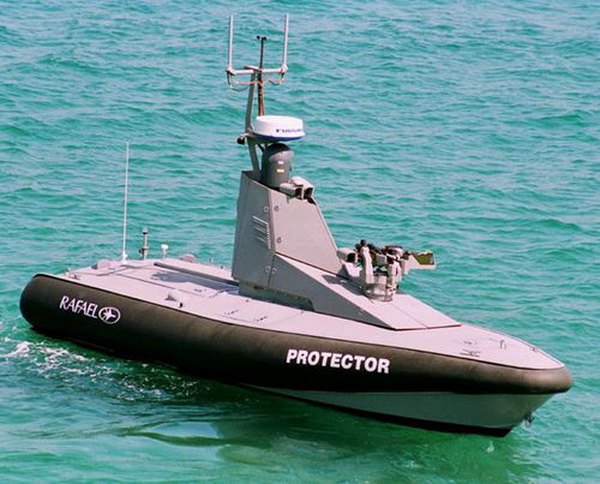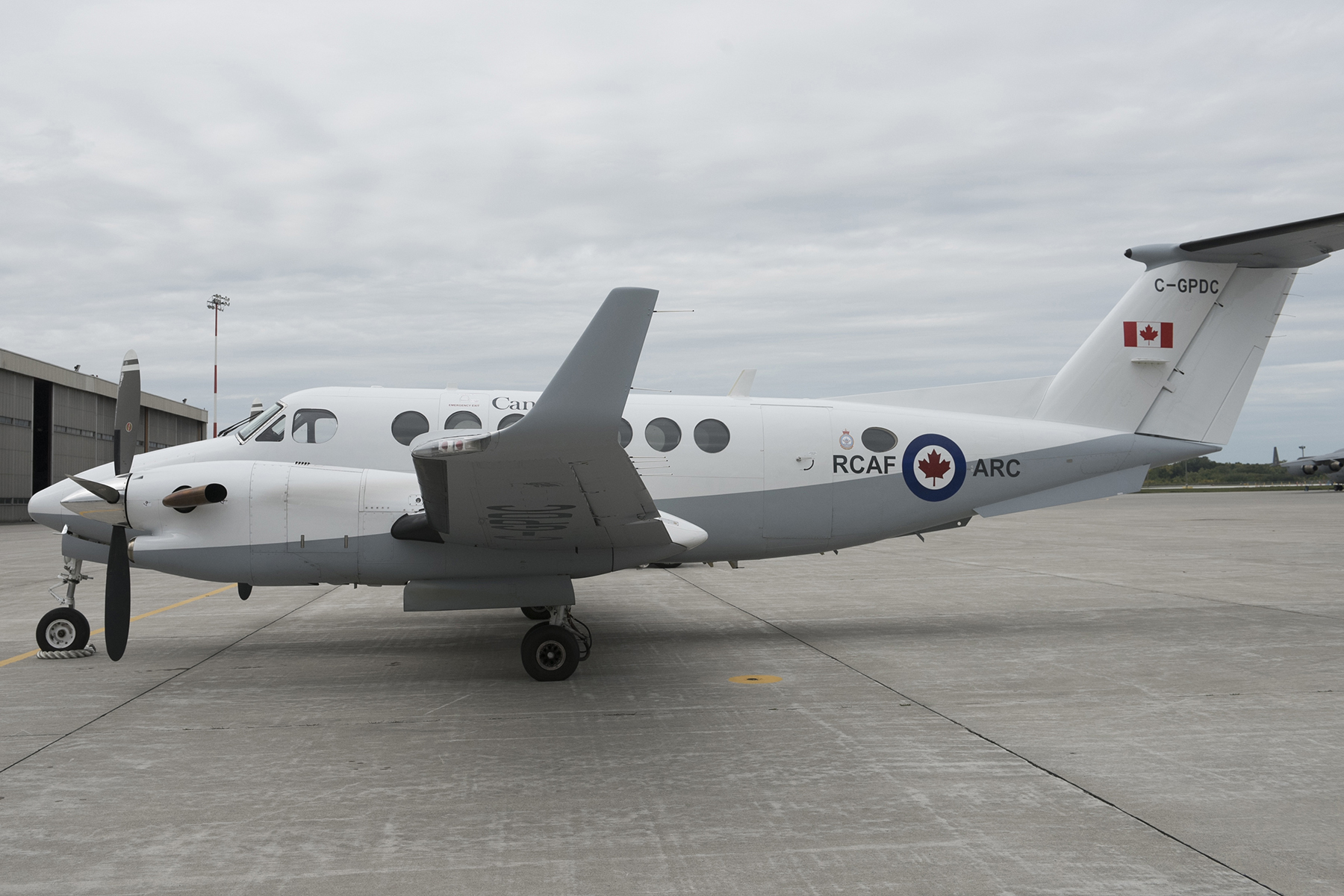The 2017 Federal Budget earmarks $83 billion in funding for Canadian National Defence over the next 30 years. This involves reallocating $8.48 billion in funding initially meant for immediate procurement, to large-scale equipment investments over the next 20 years. Postponed defence funding comes as Canada demonstrates its willingness to contribute to international security including leading a battle-group in Latvia as part of NATO’s Enhanced Forward Presence. This ongoing mission in the Baltic States and Poland is meant to reassure allies of collective security commitments while functioning as a deterrent against further Russian aggression.
Many observe the new budget as a continuation of past trends of limiting funds for National Defence. This began with the previous government in 2013 and demonstrates that both governments perceive defence investment as low-priority. This is further exemplified by similarities in the rhetoric used by Finance Minister Bill Morneau and his predecessor, the late Jim Flaherty, who stated in his own 2014 budget that “there is no point in having money there to spend if they [CAF] can’t spend it.” Minister Morneau justified the postponement of funds “to future years so that when we need the money, the money will be in the fiscal framework.” The postponement of funds relates to the delayed decisions towards equipment purchases, and the Budget promises to make funding available in the future when those decisions are made and the money is required. Critics like Dave Perry, an analyst with the Canadian Global Affairs Institute, argues that this is “actually taking money away from the military and pretending to give it back several decades in the future.”
Others view the budget in a more positive light given the lofty expectations regarding the next Defence Policy Review set to be revealed in the coming months. This includes Chief of Defence Staff, Gen. Johnathan Vance, who has stated that currently “the here and now is fine, we’re delivering […] But going forward, that’s when the government committed to sustainable, progressive armed forces.” He adds that defence officials asked for delays in funding because of delayed decisions towards several major procurement projects in the past. Defence Minister Harjit Sajjan has blamed these delays on a lack of procurement staff. This presents the hope that future funding will be significantly increased and that current delays only mean that when funds do come through, it will be worth it. Lee Berthiaume, a journalist with The Canadian Press, presents concerns among defence analysts that there will not be enough funds to sustain National Defence in the long term, as “some have flagged what they see as a gap between the amount of money available for new military equipment in the coming years, and what the government has promised to spend.”
A central problem by postponing immediate defence funding will make the CAF to seem less competitive in taking part in future coalition operations against State and non-State actors, when compared to other States with similar economic capabilities that are demonstrably more committed to investing in defence. Delaying defence spending could cause Canada to be overlooked compared to States like Denmark, Norway, and the Netherlands, all of which are currently scheduled to acquire new fighter aircraft. According to Master Cpl. (retired) Paul Franklin, this demonstrates a “lack of foresight” as the Canadian government fails to understand “the immense value that Canada can bring to the table.”
In 2015, Prime Minister Justin Trudeau ran on a campaign platform promising the Liberals would “not lapse military funding from year to year,” pledging not to cut defence spending and to work towards the 2 percent of GDP goal. The new Budget seems to be doing exactly what the Liberals said they would not do. This demonstrates the paradox between the under-delivered funds needed for the procurement of defence equipment, while also committing the CAF to increased involvement in overseas deployments. Canada’s role in leading a battle-group in Latvia is important and demonstrates Canada’s ability to take a leadership role in NATO operations. Member States notice these real commitments and will maintain an awareness of whether commitments continue to be strengthened in the future. This goes beyond rhetoric and is signaled through increased funding in procurement or lack thereof. It is worth remembering that Canada’s current contribution to NATO is roughly 1 percent of GDP.
Increasing the global presence of the CAF without also increasing defence spending could cause problems for soldiers as they are forced to do more with less. U.S. President Donald Trump has been very vocal about NATO members not doing their fair share in defence spending. The 2017 budget seems to put Canada on a collision course with the U.S., which could be expressed in the form of tense trade renegotiations. Alternatively, Canada’s postponed defence spending may not cause tension between the two North American States. It is worth bearing in mind that Canada is a minor member within the Alliance, that is geographically distant from European powers acting as the first line of defence against possible Russian aggression. As such, Canada’s national security is not guaranteed through NATO but the NORAD agreement which states the U.S. would intervene if Canada was unable to defend itself. The fact of the matter is that the U.S. will always come to Canada’s rescue in case of a foreign attack. The U.S. regards Canada as a vital buffer in defending the US mainland from potential foreign incursions. It is better to secure the continental US by countering a threat as far away from American borders as possible than meeting the challenge on its doorstep.
Photo: Canadian soldiers taking part in Exercise ALLIED SPIRIT VI in Germany during Operation REASSURANCE (2017) by Canadian Forces Combat Camera via Flickr. Photo courtesy of the Canadian Forces Combat Camera, Department of National Defense.
Disclaimer: Any views or opinions expressed in articles are solely those of the authors and do not necessarily represent the views of the NATO Association of Canada.




